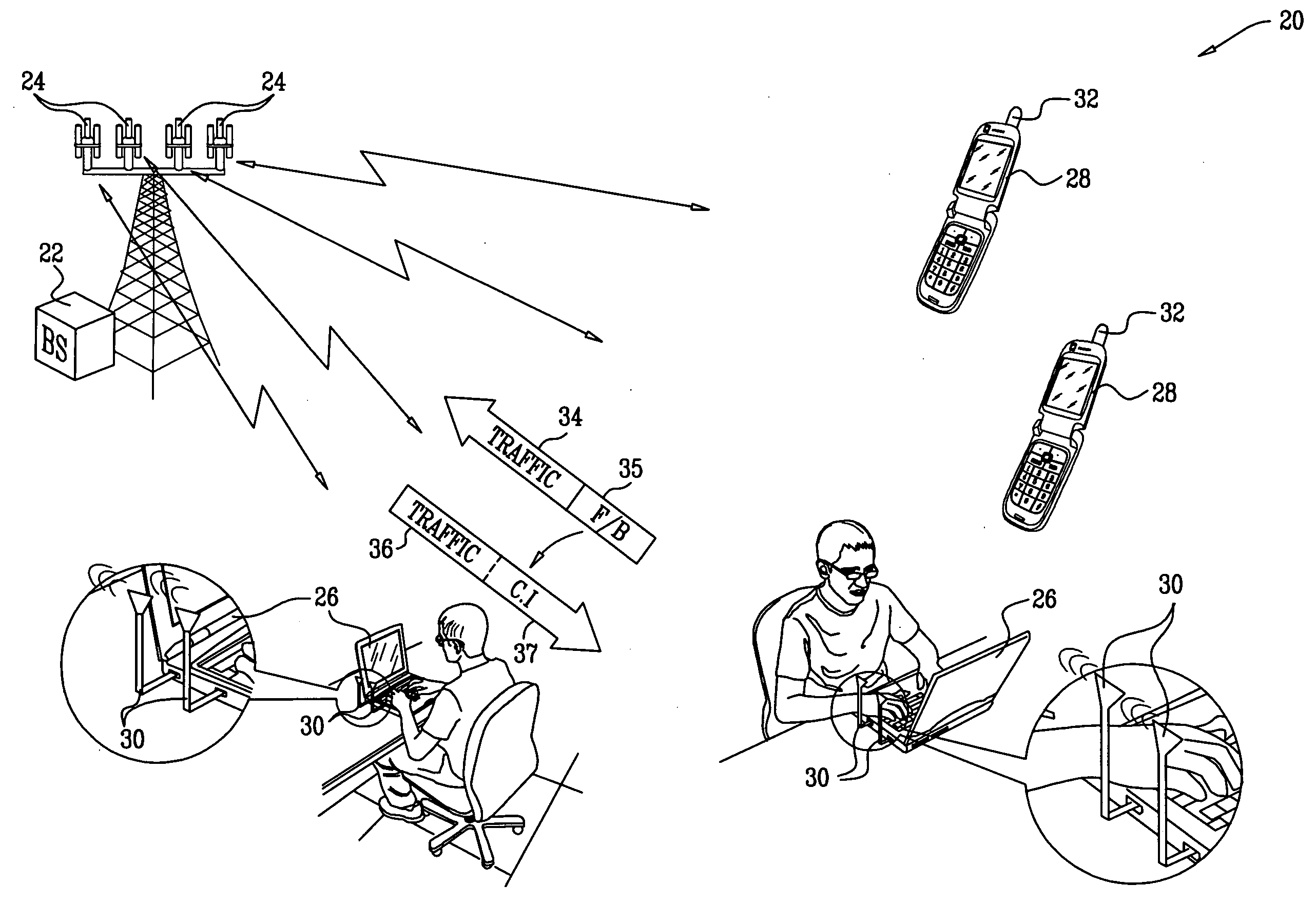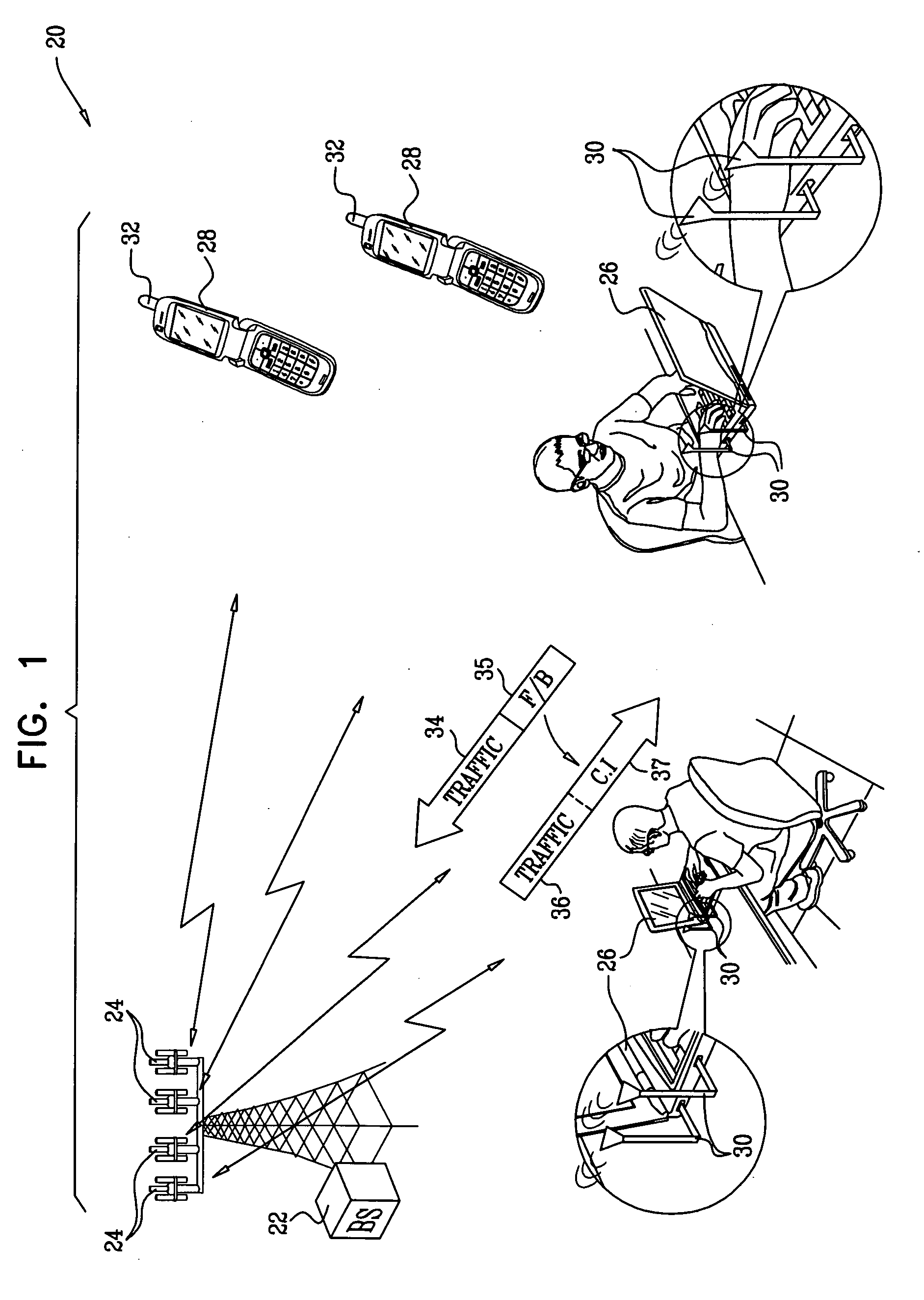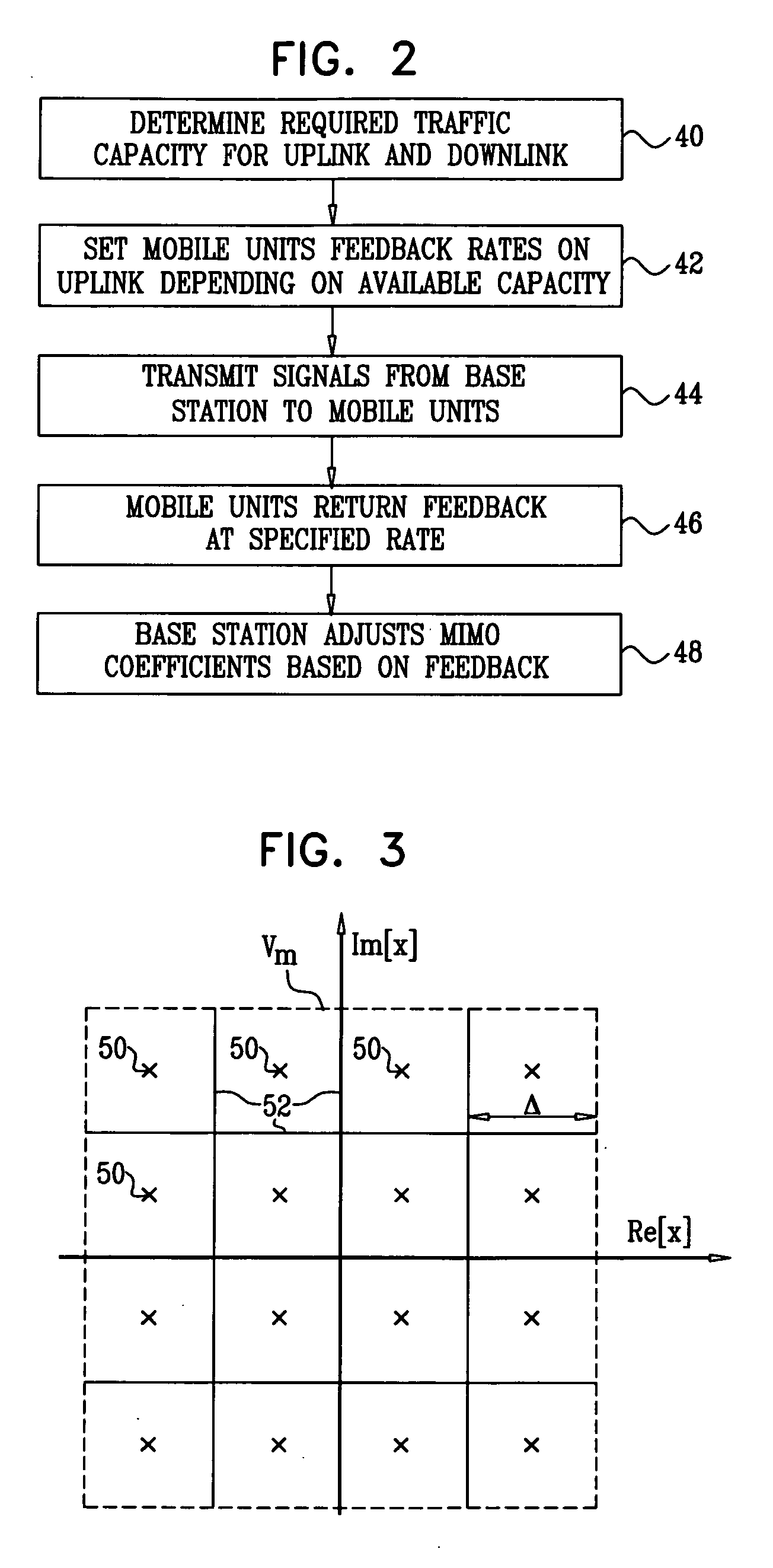Balancing capacity between link directions using variable feedback rates
a feedback rate and link direction technology, applied in the field of communication systems, can solve problems such as inefficiency still remaining
- Summary
- Abstract
- Description
- Claims
- Application Information
AI Technical Summary
Benefits of technology
Problems solved by technology
Method used
Image
Examples
Embodiment Construction
[0017]Embodiments that are described hereinbelow address and mitigate the mismatch between the frequency spectra (i.e., the bandwidths) that are allocated to the two link directions in a bidirectional link and the demand for traffic capacity in the two directions. These embodiments are useful, for example, in wireless FDD systems, in which the spectra are fixed while the mismatch between bandwidth and traffic demand can be large and variable. Therefore, the embodiments described hereinbelow relate to downlink and uplink communications between a base station and mobile terminals in such a system. The principles described herein, however, may also be applied in enhancing the traffic capacity of other sorts of bidirectional links.
[0018]Embodiments that are described herein variably balance the traffic capacities of two link directions, such as the uplink (UL) and downlink (DL) capacities in FDD systems based on feedback. This approach enables dynamic balancing of the DL / UL capacities r...
PUM
 Login to View More
Login to View More Abstract
Description
Claims
Application Information
 Login to View More
Login to View More - R&D
- Intellectual Property
- Life Sciences
- Materials
- Tech Scout
- Unparalleled Data Quality
- Higher Quality Content
- 60% Fewer Hallucinations
Browse by: Latest US Patents, China's latest patents, Technical Efficacy Thesaurus, Application Domain, Technology Topic, Popular Technical Reports.
© 2025 PatSnap. All rights reserved.Legal|Privacy policy|Modern Slavery Act Transparency Statement|Sitemap|About US| Contact US: help@patsnap.com



